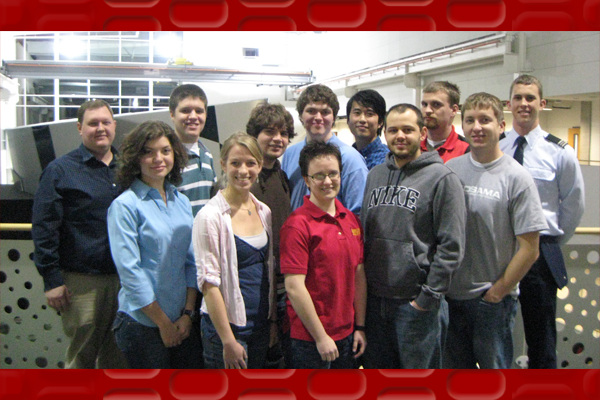Christopher Reis, senior in electrical engineering, and a team of undergraduate and graduate students from across the engineering college recently won a $4,000 grant from NASA to build a nanosatellite, or a satellite with a 1kg maximum mass, called CySat.
The satellite will meet CubeSat qualifications, which were conceived as an economic alternative for universities and small businesses to develop their own small satellite. A CubeSat is a standardized 1 kilogram, 10 centimeter cubed structure and basic electronics set that can be customized with variable payloads, solar cell arrays, and support electronics. Reis likened the process of creating a CubeSat to building a computer by “buying the case and motherboard and customizing the rest.”
If the team is successful, CySat will be Iowa State’s first university-operated satellite.
The road to legitimizing CySat as a project with staying power started in the early 2000s. The project faced initial setbacks both in finding committed team members and securing funding. While teammates have come and gone over the semesters, however, the project has recently gained significant momentum.
The team began collaborating with the aerospace and electrical engineering departments and the Iowa Space Grant Consortium, part of the NASA National Space Grant College and Fellowship Program.
They were also able to start working with a company called Softronics Ltd. in Marion, Iowa, when several CySat members either went to work for or performed internships with the company. Thanks to Softronics, the CySat team had the opportunity to work with high altitude balloon experiments in technology (HABET) to test a wide bandwidth radiometer. HABET provides them with a platform to test the project before it is actually launched into space.
These balloons travel to altitudes higher than 115,000 feet (around five times higher than the average jet flies), where the atmosphere is thin. Using data from HABET launches provides the team with an idea of the atmosphere and orbital environment CySat will someday experience. The balloons also allow CySat members to test near-space techniques and equipment at costs that range from $500 to $1,000 rather than the $30,000 launch cost of a CubeSat.
The roster of team members on the grant submission to NASA’s Exploration System Mission Directorate Higher Education Project (ESMD) includes two graduate students, one in aerospace engineering and the other in electrical and computer engineering, and ten undergraduate students, comprised of eight aerospace engineering students, a materials engineering student, and an electrical engineering student.
The CySat group is broken up into teams working on different aspects of the CubeSat modification, including power; command and data; structures and testing; communications; and mission analysis.
Reis calls the recent NASA grant, as well as the aerospace engineering department’s pledge to match NASA’s contribution, a “big sigh of relief.” After working since he was a freshman to get backing for CySat, having these resources has given the project a new sense of potential.
The team’s current goal is to use the new funds to develop and launch CySat in next three years.
